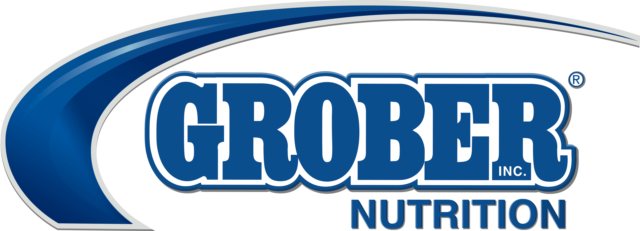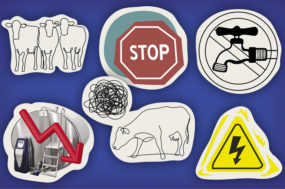WCCHTA’s vice president Doug Johnstone, in collaboration with Rob Geier, Elbert Koster and Philip Spence, discussed the purpose, history and intentions of this organization with Progressive Dairyman.
What is the mission/purpose of the Western Canadian Certified Hoof Trimmers Association (WCCHTA)?
The mission statement of the WCCHTA is as follows: To illustrate to the dairy industry, dairy health care professionals and the public a standard and professionalism in bovine hoof trimming, hoof care, stockmanship and animal welfare through continuing education.
We are not trying to replace the Hoof Trimmers Association Inc. (HTA) with this organization, but trying to be somewhat like the Ontario Hoof Trimmers Guild, where we can provide members with an additional educational experience and fellowship.
Why was it formed?
We thought that trying to standardize and improve the hoof-trimming methods in western Canada by adopting a tried-and-true method would benefit the hoof trimmer as well as the dairy producer. Also, by keeping the association within the parameters of western Canada, the area to reach members is not as large as the worldwide area the HTA encompasses.
Who have been the key people involved in founding this group?
There have been a number of people involved over the past few years, such as Taco Hansma, Elbert Koster, Philip Spence, Quinn Marshall, Gerrit Rypma and Hugh Smythe. However, at the present time, the two individuals “steering the ship” are Rob Geier (president) and Doug Johnstone (vice president).
In what ways do you believe this organization will benefit Canadian dairy farmers?
Now dairy farmers can choose to hire a hoof trimmer with a standard of skill and knowledge of hoof health care and prevention through evidence-based treatment and trimming protocols.
Another benefit is that these skills and knowledge will constantly be tested through a re-check procedure, which means the certified hoof trimmer will review hoof-trimming protocols on a regular basis.
How is the group organized?
The WCCHTA has a duly elected board of directors consisting of a president, vice-president, secretary, treasurer and a member-at-large. This association is a non-profit society registered in the province of Alberta. All of the labour is volunteer at this time other than the cost of speakers or instructors for courses which the association puts on.
This volunteer board consists of Rob Geier, Doug Johnstone, Quinn Marshall, Elbert Koster and Cameron Baird. We presently don’t have a website or means of communicating with members, potential members and sponsors other than by email.
Tell us about the recent certification clinic
This was not the first certification course of its type held in western Canada. A certification course was held at Buffalo Lake, Alberta, in August 2012, with eight participants. That course and this past week’s course were both a complete success.
This most recent certification course focused not only on certifying additional hoof trimmers from western Canada but also on providing advanced training to four previously certified hoof trimmers.
The certification course involved six individuals from western Canada who took part in a four-day course involving theoretical and practical sessions in the Dutch five-step hoof-trimming method.
The first day was spent in the classroom, taking in sessions involving anatomy, biomechanics, risk factors for lameness and explanation of the Dutch five-step hoof-trimming method, which was developed by Dr. Toussaint Raven some 40 years ago.
This method was chosen by the WCCHTA as a base standard because of its scientific backing, and it has also stood the test of time by having the methodology proven over and over again. Trimming cadaver feet using this method, blocking techniques and knife sharpening were also included on the first day.
The remaining three days were spent practicing on live cows at three separate farms, with the last day being totally devoted to testing the six students on the theory and practical hoof-trimming instruction they had received over the previous three days.
On top of all this, four of the hoof trimmers that were certified three years ago assisted Pieter Kloosterman of DTC+ Oenkerk, Netherlands, in teaching the certification course as part of their training to become instructors.
This part of the course started two days earlier than the certification course and continued for the rest of the week. The goal of this advanced training was to allow these individuals to certify other trimmers and provide educational opportunities to farmers and industry members.
This course not only certified an additional six hoof trimmers in western Canada, it instilled a drive, verified by all the trimmers involved, to bring our profession to the next level.
We all want to operate under a certain level of practical and theoretical knowledge and to implement an industry-proven system based in research and practical experience.
In closing, I would like to say it was clearly unanimous by everyone involved that this would not be the last training session but rather the first of many with the goal to continue to improve our industry, keep up with evidence-based practice and continue to improve our skills while learning from one another. PD








